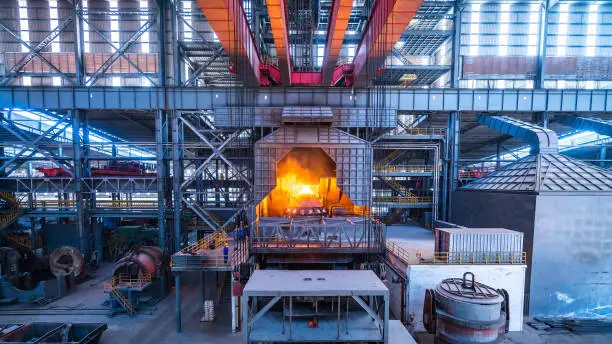Content of Article

Steel is more than just a material—it’s the foundation upon which our modern world is built. From towering skyscrapers and sprawling bridges to the cars we drive and the utensils we use, steel shapes every facet of our daily lives. Its journey from ancient innovation to high-tech marvel is a testament to human ingenuity and the relentless pursuit of progress.
What is Steel?
Steel is an alloy of iron and carbon, with the carbon content typically up to 2%. If the carbon content is higher, the material is classified as cast iron, which is harder but more brittle than steel. The addition of carbon and other elements transforms soft, pure iron into a strong, versatile, and workable material.
A Brief History of Steel
Steel’s story stretches back over two millennia. Early forms were crafted by master metallurgists in ancient China and India, but it was the Industrial Revolution of the 19th century that truly unlocked the potential of this technology. The invention of the Bessemer process allowed for mass production, making steel affordable and available in unprecedented quantities. This innovation fueled the rise of railways, skyscrapers, and modern infrastructure.
How Steel is Made

There are two primary methods of steel production today:
- Basic Oxygen Steelmaking (BOS): Uses molten pig iron from a blast furnace mixed with scrap steel. Oxygen is blown through the mixture to remove impurities and adjust carbon content.
- Electric Arc Furnace (EAF): Primarily uses recycled scrap steel, melted using high-power electric arcs. This method is more flexible and energy-efficient, especially for recycling.
Both methods aim to remove unwanted impurities and allow for precise control of the final alloy’s properties by adding elements like manganese, nickel, chromium, and vanadium.
Properties That Make Steel Unique
Steel’s popularity stems from its remarkable combination of properties:
- Strength and Toughness: Steel can withstand enormous forces, making it ideal for construction and machinery.
- Ductility and Malleability: It can be shaped, rolled, and formed into countless products without breaking.
- Versatility: By tweaking its composition and processing, steelmakers can create hundreds of specialized grades for different applications—from razor-thin foils to ultra-strong beams.
- Recyclability: Steel is infinitely recyclable without loss of quality, making it a sustainable choice for the future.
Types of Steel
Steel isn’t one-size-fits-all. The most common types include:
- Carbon Steels: The simplest form, containing only iron and carbon. Used for structural beams, plates, and general construction.
- Alloy Steels: Enhanced with elements like chromium, nickel, or vanadium for improved strength, toughness, or corrosion resistance.
- Stainless Steels: High in chromium, these steels resist rust and are used in everything from cutlery to medical instruments.
- High-Strength Low-Alloy (HSLA) Steels: Designed for maximum strength with minimal weight, crucial for automotive and aerospace industries.
Steel in Everyday Life
Steel’s impact is everywhere:
- Construction: Skyscrapers, bridges, stadiums, and homes rely on steel’s strength and flexibility.
- Transportation: Cars, trains, ships, and airplanes use steel for safety, durability, and efficiency.
- Energy: Pipelines, wind turbines, and power plants depend on steel’s resilience.
- Household Goods: From appliances to packaging, steel is part of our daily routines.

Innovation and the Future of Steel
Steel production has become cleaner and more efficient. Modern plants use less energy and emit fewer pollutants than ever before. Advanced high-strength steels (AHSS) are making vehicles lighter and more fuel-efficient, reducing emissions over their lifetime. The industry is also working to further cut carbon emissions, with new technologies on the horizon.
Why Steel Remains Irreplaceable
Despite the rise of new materials, steel’s unique blend of strength, versatility, and sustainability ensures its continued dominance. Its ability to be endlessly recycled means steel will remain abundant and vital for generations to come.
“Steel has played a vital enabling role throughout much of human history. It was the material of the highest-prized tools in the Iron Age and the most feared weapons in the Middle Ages. It was the material that drove the Industrial Revolution and underpinned the economic development of countless countries.”
Conclusion
Steel is not just a material—it’s a symbol of progress. Its evolution mirrors that of civilization itself, adapting to new challenges and powering the innovations that define each era. As we look to a more sustainable future, steel’s story is far from over—it’s only entering its next exciting chapter.
